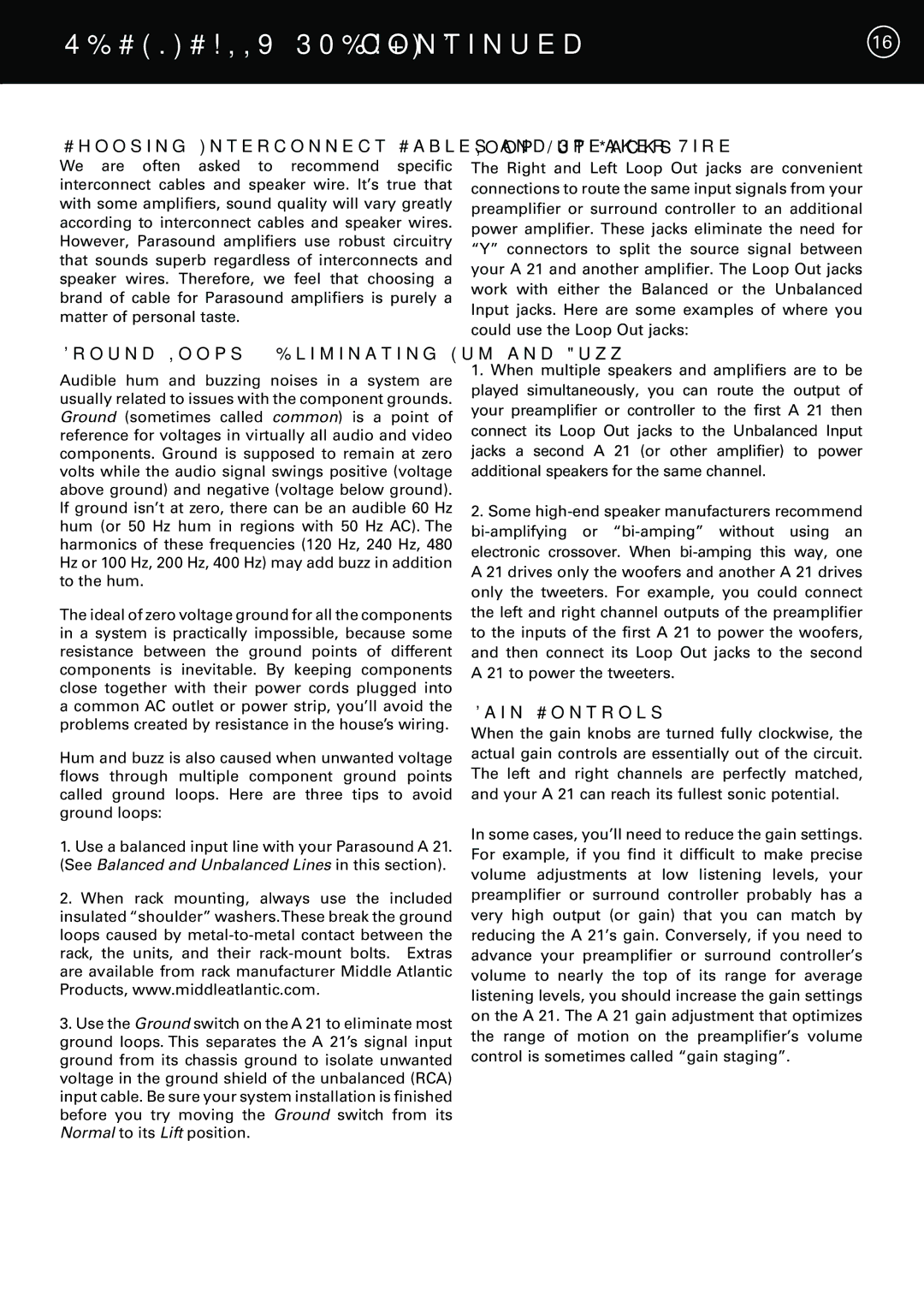A 21 specifications
The Parasound A 21 is a high-performance power amplifier renowned for its exceptional audio quality and build integrity. It is designed to meet the demands of audiophiles and music enthusiasts, aiming to deliver an unparalleled listening experience. This amplifier stands out with a robust power output, delivering 250 watts per channel into 8 ohms and 400 watts into 4 ohms, providing ample power to drive a wide range of loudspeakers.One of the key features of the Parasound A 21 is its ultra-linear Class AB amplification. This technology allows the amplifier to achieve high power without compromising on sound quality. The Class AB design is known for its low distortion and high efficiency, making it capable of reproducing dynamic music with clarity and precision. The A 21 also incorporates a toroidal transformer, which helps in producing clean power and minimizes electrical interference, ensuring that the sound remains unaffected by fluctuating power conditions.
The build quality of the A 21 is exceptional, with a sturdy chassis designed to minimize vibrations and enhance performance. The amplifier is housed in a sleek, attractive enclosure that not only looks elegant but also provides adequate heat dissipation. This is a crucial aspect, as it ensures the amplifier operates efficiently without overheating during extended listening sessions.
In terms of connectivity, the Parasound A 21 features balanced XLR and unbalanced RCA inputs, allowing users to integrate it seamlessly into various audio systems. The amplifier also has a 12V trigger input, enabling remote operation which can be a significant convenience for users with complex audio setups.
The A 21 is built with high-quality components, including high-current power supply capacitors and output transistors, further enhancing its reliability and performance. Its sound signature is characterized by an expansive soundstage, detailed mids, and deep, controlled bass, making it suitable for a diverse range of music genres.
For those seeking an amplifier that combines power, precision, and aesthetic appeal, the Parasound A 21 is a standout choice. It delivers an impressive blend of technological advancements and user-friendly features, ensuring that audiophiles can enjoy their favorite music as it was meant to be heard. Overall, the A 21 exemplifies Parasound’s commitment to excellence and remains a trusted option in high-fidelity audio systems.

